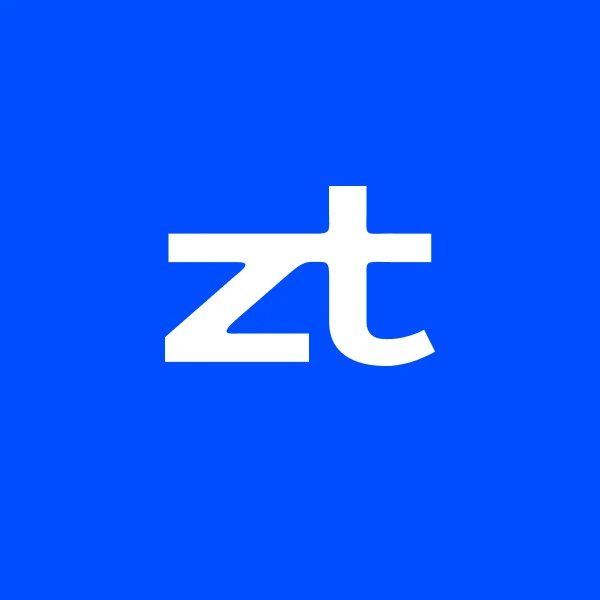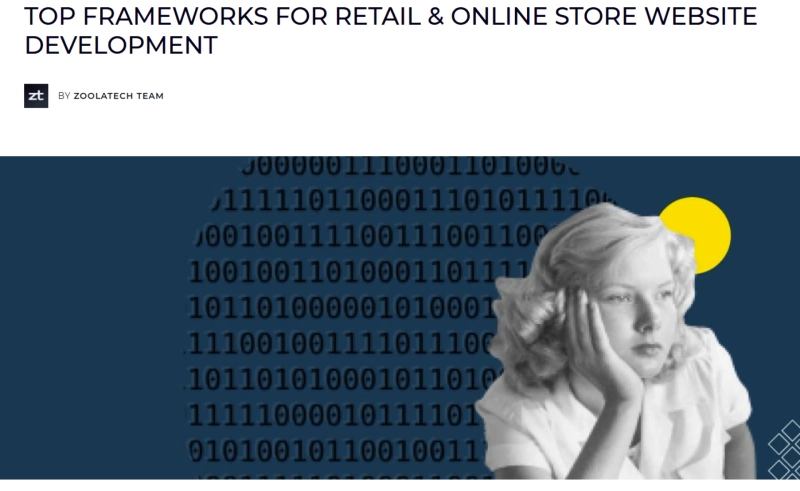In the ever-evolving world of software development, choosing the right technology stack is as important as hiring the right people. The tools, frameworks, and platforms you select will shape the speed, scalability, and success of your product. This process, often called tech framework shopping, is not just about picking what’s trendy — it’s about aligning your technical decisions with your business goals, development capabilities, and long-term vision.
Whether you’re a startup founder, CTO, or product manager, the ability to navigate the landscape of frameworks is vital. Companies like Zoolatech specialize in helping businesses make smart tech choices that lead to scalable and maintainable digital products. But how do you actually approach this process? How can you identify what fits your team, budget, and project requirements?
This guide will walk you through the key principles of tech framework shopping — what it means, how to evaluate your options, and which criteria to prioritize when selecting the right framework for your next project.
1. What Is Tech Framework Shopping?
At its core, tech framework shopping refers to the process of researching, comparing, and selecting the most suitable frameworks for building digital products — whether that’s a web app, mobile app, or enterprise solution. Frameworks act as the foundation upon which developers build functionality. They provide pre-written components, libraries, and structures that streamline development.
When engaging in tech framework shopping, businesses usually evaluate multiple aspects such as:
- Performance and scalability
- Ease of integration
- Community support
- Security and reliability
- Long-term maintainability
In today’s ecosystem, with hundreds of frameworks available — from React and Angular for front-end to Django, Laravel, or Spring Boot for back-end — the challenge lies not in finding a framework but in finding the right one.
2. Why Framework Selection Matters
Choosing the right tech framework can determine your product’s success or failure. A poor choice might lead to technical debt, slow performance, or difficulty hiring skilled developers later on.
Key Reasons Framework Selection Is Critical
- Development Speed and Cost
- Some frameworks allow rapid prototyping, while others are more robust but complex. Balancing speed and quality helps teams deliver products faster without compromising on stability.
- Performance and Scalability
- Your chosen framework will affect how your system handles traffic, data, and user growth. For example, frameworks like Node.js and Golang are known for handling concurrent requests efficiently.
- Talent Availability
- A popular framework means easier hiring. For instance, finding React developers is typically easier than finding specialists in less common libraries.
- Maintenance and Longevity
- Frameworks evolve. Some fade away; others become industry standards. Choosing a mature, well-supported framework ensures your codebase won’t become obsolete.
- Security and Compliance
- Enterprise-grade frameworks often include built-in protections and compliance features, reducing your risk exposure.
3. The Tech Framework Shopping Process
Just like you wouldn’t buy a car without comparing models, features, and reliability, tech framework shopping requires structured evaluation. Let’s break it down step-by-step.
Step 1: Define Your Project Goals
Before diving into comparisons, define what you want to achieve.
Ask:
- What is the product’s main purpose?
- How many users do we expect in the first year?
- Do we need fast MVP development or enterprise-grade scalability?
A clear understanding of your business and technical goals narrows down the framework choices drastically.
Step 2: Evaluate the Technical Requirements
Next, analyze what the project technically demands.
Consider:
- Frontend needs: Do you need high interactivity (React, Vue) or server-rendered simplicity (Next.js, Nuxt)?
- Backend complexity: Does your app require real-time updates (Node.js) or strong data handling (Django, Spring)?
- Integration: Will you connect to APIs, third-party services, or legacy systems?
Each requirement points you toward specific framework strengths.
Step 3: Research Framework Ecosystems
During your tech framework shopping journey, look at the ecosystem around each candidate. A strong ecosystem includes:
- Active developer communities
- Extensive documentation
- Frequent updates
- Available third-party plugins
For example, React’s ecosystem offers thousands of libraries and tools, while Django’s “batteries-included” philosophy provides everything from authentication to admin panels.
Step 4: Assess Learning Curve and Team Skillset
Your existing team’s experience plays a huge role. Choosing a framework that matches your developers’ strengths can cut onboarding time and boost productivity.
For instance, a team with strong JavaScript expertise might find it natural to adopt Node.js for backend tasks instead of learning Python’s Django from scratch.
Step 5: Test and Prototype
Don’t commit without testing. Building a small proof of concept can reveal how intuitive, efficient, and scalable the framework truly is.
This step is crucial to avoid technical surprises later.
Step 6: Evaluate Long-Term Support
A framework’s popularity can be misleading. Some technologies gain hype but fade within years. Check:
- Release frequency
- Corporate or community backing
- Active bug fixes and patches
For example, frameworks backed by major organizations (like Google’s Angular or Meta’s React) often have longer lifespans and better support.
4. Comparing Popular Frameworks in 2025
Let’s explore some of the most popular frameworks across different stacks to illustrate the variety of options available during tech framework shopping.
CategoryFrameworkKey StrengthsIdeal Use CaseFrontendReact.jsHuge ecosystem, reusable components, performanceScalable web apps, SPAsVue.jsLightweight, simple learning curveMVPs, small to mid-size appsAngularStrong structure, TypeScript-basedEnterprise-grade appsBackendNode.jsFast I/O, scalable for real-time appsChat apps, live dashboardsDjangoSecurity, built-in admin, rapid devData-heavy applicationsSpring BootEnterprise-ready, reliableFinancial, enterprise systemsMobileFlutterSingle codebase, smooth UICross-platform appsReact NativeLarge dev communityHybrid mobile appsData & AITensorFlowDeep learning frameworkAI/ML solutionsPyTorchFlexibility, academic useAI research and prototypes
5. Strategic Framework Shopping for Businesses
Organizations like Zoolatech approach tech framework shopping strategically, integrating both technical and business perspectives. It’s not just about code efficiency — it’s about how a framework supports your entire product lifecycle.
Business Factors to Consider
- Total Cost of Ownership (TCO)
- A framework’s total cost goes beyond licensing. It includes development time, training, maintenance, and infrastructure costs. Open-source frameworks reduce initial costs but may require more setup and support.
- Vendor and Community Support
- Active communities reduce troubleshooting time and ensure quicker problem-solving.
- Integration with Existing Systems
- If your company already uses AWS, Azure, or Google Cloud, some frameworks integrate more seamlessly with those ecosystems.
- Future Roadmap
- A framework aligned with future trends — like AI integration, cloud-native architecture, or serverless computing — ensures longevity.
6. Common Mistakes in Tech Framework Shopping
Framework selection can be tricky. Avoid these common pitfalls:
Mistake 1: Following Trends Blindly
Just because a framework is popular doesn’t mean it fits your needs. Always evaluate based on your unique project requirements.
Mistake 2: Ignoring Scalability
Some frameworks work well for small prototypes but struggle with high traffic. Think about your long-term growth from day one.
Mistake 3: Neglecting Developer Experience
A poor developer experience leads to burnout and slower delivery. Choose frameworks with intuitive syntax, documentation, and community resources.
Mistake 4: Overlooking Maintenance Costs
Maintenance is often more expensive than initial development. Frameworks with frequent updates and long-term support are safer choices.
7. The Role of Framework Compatibility
When performing tech framework shopping, compatibility is key. Frameworks must integrate seamlessly with:
- Databases (SQL, NoSQL)
- Cloud environments (AWS, Azure, GCP)
- CI/CD tools (Jenkins, GitHub Actions)
- Security and monitoring solutions
For example, a Django-based backend should easily connect with REST APIs or GraphQL layers used by React frontends. Zoolatech’s engineering teams often prioritize this holistic compatibility to ensure smooth performance and maintainability.
8. How Zoolatech Helps with Framework Selection
Zoolatech, a global software engineering company, has a structured approach to tech framework shopping. The firm focuses on aligning business strategy with the right technological foundation.
Zoolatech’s Approach Includes:
- Discovery Workshops
- They collaborate with clients to analyze business objectives, target audiences, and functional needs.
- Technical Audits
- Zoolatech’s engineers assess the client’s existing systems, identifying opportunities for modernization or optimization.
- Framework Benchmarking
- Using performance, scalability, and developer productivity metrics, Zoolatech compares potential frameworks.
- Proof of Concept (PoC)
- The team develops a mini-prototype to test real-world usability and integration.
- Implementation Roadmap
- Once a framework is selected, Zoolatech creates a detailed rollout plan including milestones, security protocols, and team assignments.
By combining business intelligence with engineering excellence, Zoolatech ensures clients don’t just pick a framework — they choose a future-proof foundation.
9. The Future of Tech Framework Shopping
The landscape of frameworks evolves rapidly. Several trends will redefine how businesses approach framework selection in the next few years.
1. AI-Driven Framework Evaluation
Artificial intelligence will assist teams in comparing frameworks based on predictive performance models and historical project data.
2. Cloud-Native and Serverless Frameworks
The rise of serverless architecture (AWS Lambda, Google Cloud Run) will push developers toward frameworks optimized for microservices.
3. Low-Code and No-Code Integration
Even professional frameworks are starting to include low-code components to accelerate prototyping and democratize development.
4. Sustainability and Green Coding
Framework efficiency will be evaluated not just by speed but by energy consumption and carbon footprint.
10. Key Takeaways
- Define goals first: Don’t shop for frameworks without understanding your project’s business and technical needs.
- Research ecosystems: Active communities and documentation matter more than hype.
- Test before committing: Build prototypes to evaluate real-world performance.
- Plan for the future: Consider long-term scalability, maintenance, and developer support.
- Leverage experts: Partnering with firms like Zoolatech can help you make data-driven, strategic decisions.
Conclusion
The art of tech framework shopping lies in balancing innovation with practicality. Choosing the right framework can accelerate your roadmap, enhance product performance, and empower your development team. Conversely, the wrong choice can slow you down for years.
Modern businesses need a structured approach — combining technical insight, business alignment, and long-term thinking. With expert partners like Zoolatech, you can transform the complexity of tech framework shopping into a competitive advantage.



